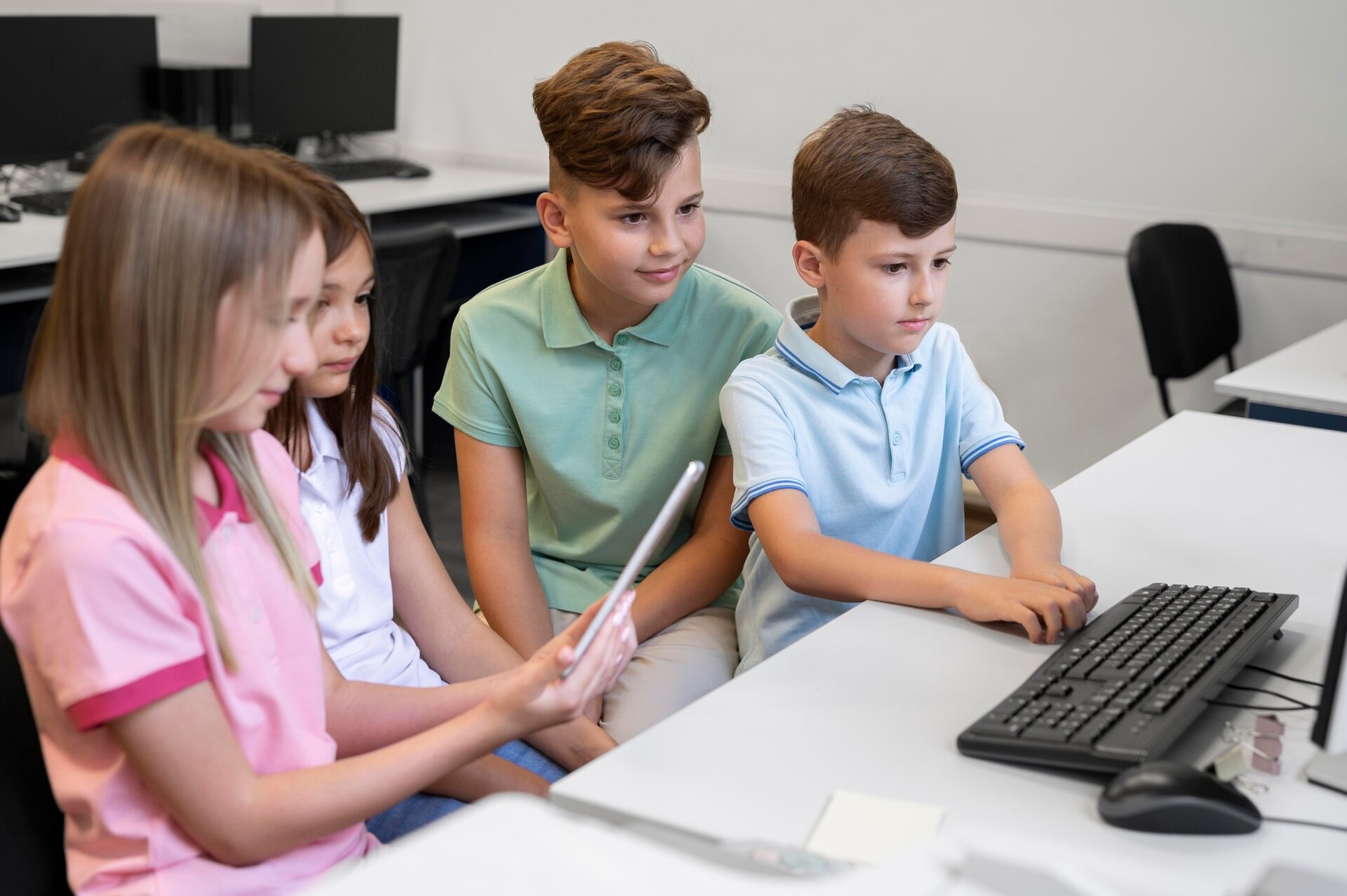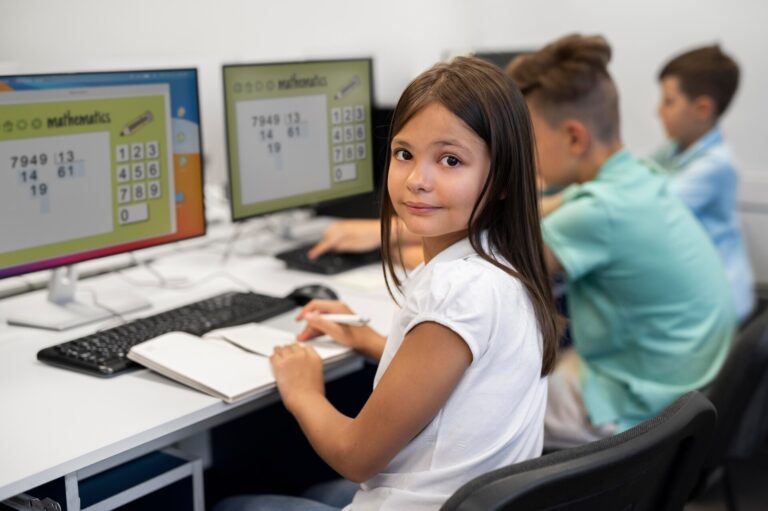Are you looking for ways to make learning more fun and engaging for your students on Google Classroom? Look no further! In this article, we will explore the exciting world of Google Classroom games and how they can boost learning in your virtual classroom. Whether you’re a teacher or a student, incorporating games into your activities can make the learning experience more enjoyable and interactive.
With the increasing popularity of online learning platforms like Google Classroom, it’s important to find innovative ways to keep students engaged. That’s where Google Classroom games come in. These games not only entertain students but also help reinforce important concepts and skills. From interactive quizzes to virtual scavenger hunts, there are endless possibilities for incorporating games into your Google Classroom activities.
So, if you’re looking for suggestions and instructions on how to incorporate games into your Google Classroom, you’ve come to the right place. In the following paragraphs, we will provide you with a variety of fun and engaging Google Classroom games that will surely boost learning and make your virtual classroom experience more enjoyable. Get ready to take your online learning to the next level with these exciting games!

Unlock Learning Fun: 5 Keys to Engaging Google Classroom Games
Unlock the potential of learning through fun and engaging Google Classroom games.
1. Create a Game-Based Learning Environment
Transform your classroom into an exciting game-based learning environment that captivates students’ attention and enhances their learning experience.
2. Incorporate Interactive Elements
Integrate interactive elements such as quizzes, puzzles, and challenges into your Google Classroom games to promote active participation and critical thinking skills.
3. Foster Collaboration and Competition
Encourage collaboration and healthy competition among students by incorporating multiplayer games and team-based activities in your Google Classroom.
4. Provide Immediate Feedback
Offer immediate feedback and rewards to students as they progress through the game, motivating them to continue learning and improving their skills.
5. Personalize Learning Experiences
Tailor the game-based activities to meet the individual needs and interests of your students, allowing them to take ownership of their learning journey.
Embark on a journey of unlocking learning fun with these five keys to engaging Google Classroom games.
Boost Student Engagement: 10 Simple Methods for Google Classroom Games
Boosting student engagement is crucial for creating a dynamic and interactive learning environment. In this article, we will explore 10 simple methods to enhance student engagement through Google Classroom games.
1. Interactive Quizzes: Making Learning Fun
Engage students with interactive quizzes that test their knowledge and provide immediate feedback.
2. Collaborative Challenges: Fostering Teamwork
Encourage collaboration by incorporating group challenges that require students to work together to solve problems.
3. Gamified Assessments: Turning Tests into Games
Transform traditional assessments into exciting games that motivate students to demonstrate their understanding.
4. Virtual Field Trips: Bringing Learning to Life
Take students on virtual field trips to explore new places and cultures, making learning a captivating adventure.
5. Personalized Learning Paths: Catering to Individual Needs
Tailor learning experiences to each student’s needs by providing personalized learning paths that adapt to their progress.
By implementing these 10 simple methods, educators can create a stimulating and engaging learning environment that promotes active participation and deepens students’ understanding.
Level Up Learning: 5 Steps to Incorporating Games in Google Classroom
Step 1: Set the Stage for Engagement
Engage your students from the start by creating a captivating introduction to the game. Use interactive visuals, intriguing storylines, or real-life scenarios to grab their attention and spark their curiosity.
Step 2: Design Meaningful Challenges
Craft game challenges that align with your learning objectives and provide opportunities for students to apply their knowledge and skills. Ensure that the challenges are relevant, meaningful, and progressively more difficult to keep students motivated and engaged.
Step 3: Foster Collaboration and Competition
Encourage collaboration by incorporating team-based activities or multiplayer games that require students to work together towards a common goal. Additionally, introduce healthy competition by incorporating leaderboards or rewards for top performers, motivating students to strive for excellence.
Step 4: Provide Timely Feedback
Offer immediate feedback to students as they progress through the game. This feedback can be in the form of scores, badges, or personalized comments, helping students understand their strengths and areas for improvement.
Step 5: Reflect and Reinforce Learning
After the game, facilitate a reflective discussion where students can share their experiences, insights, and lessons learned. Use this opportunity to reinforce key concepts and connect the game to real-world applications, deepening their understanding of the subject matter.
Maximize Learning Potential: 10 Simple Methods for Google Classroom Games
Engage Students with Interactive Learning
Incorporating games into Google Classroom can greatly enhance student engagement and participation. By creating interactive learning experiences, students are more likely to be actively involved in the material and retain information more effectively.
Utilize Gamification Techniques
One effective method for maximizing learning potential is to utilize gamification techniques in Google Classroom games. This involves incorporating elements such as points, levels, and rewards to create a sense of competition and motivation among students. By making learning fun and competitive, students are more likely to be motivated to actively participate and strive for success.
By implementing these 10 simple methods, educators can unlock the full potential of Google Classroom games and create an engaging and interactive learning environment for their students. From incorporating gamification techniques to utilizing interactive learning tools, these strategies will help maximize student engagement and enhance the overall learning experience. So, level up your teaching game and start gamifying education in your Google Classroom today!
Game On! 5 Keys to Engaging Google Classroom Activities
Key 1: Interactive Content
Engaging Google Classroom activities require interactive content that captivates students’ attention. Incorporate multimedia elements such as videos, images, and interactive quizzes to make learning more exciting.
Key 2: Collaborative Challenges
Promote teamwork and collaboration by incorporating group challenges into Google Classroom activities. Encourage students to work together to solve problems and complete tasks, fostering a sense of camaraderie and enhancing engagement.
Key 3: Personalized Learning
Tailor Google Classroom activities to meet the individual needs and interests of students. Provide options for different learning styles and allow students to choose topics or projects that resonate with them, increasing motivation and engagement.
Key 4: Gamification Elements
Incorporate gamification elements such as leaderboards, badges, and rewards into Google Classroom activities. These elements create a sense of competition and achievement, motivating students to actively participate and excel.
Key 5: Real-World Connections
Make Google Classroom activities relevant to the real world by connecting them to current events, practical applications, or real-life scenarios. This helps students see the value and applicability of what they are learning, increasing their engagement and enthusiasm.
Enhance Learning Experience: 10 Simple Methods for Google Classroom Games
Google Classroom games can be a great way to engage students and enhance their learning experience. Here are 10 simple methods for incorporating games into Google Classroom:
1. Create a Quiz
Creating a quiz is a great way to get students engaged and test their knowledge. Quizzes can be created using Google Forms and can be easily shared with students in the classroom.
2. Use Interactive Games
Interactive games can be used to help students learn and practice new concepts. These games can be found online or created using Google Slides.
3. Incorporate Virtual Reality
Virtual reality can be used to create immersive learning experiences for students. Google Expeditions is a great tool for creating virtual reality experiences in the classroom.
4. Utilize Video Games
Video games can be used to help students learn and practice new concepts. Games like Minecraft and Roblox can be used to teach students about coding and problem-solving.
5. Incorporate Augmented Reality
Augmented reality can be used to create interactive learning experiences for students. Google Expeditions is a great tool for creating augmented reality experiences in the classroom.
6. Create a Scavenger Hunt
Scavenger hunts can be used to engage students and help them learn new concepts. These hunts can be created using Google Forms and can be easily shared with students in the classroom.
7. Use Online Games
Online games can be used to help students learn and practice new concepts. These games can be found online or created using Google Slides.
8. Incorporate Simulations
Simulations can be used to create immersive learning experiences for students. Google Expeditions is a great tool for creating simulations in the classroom.
9. Utilize Board Games
Board games can be used to help students learn and practice new concepts. Games like Monopoly and Scrabble can be used to teach students about strategy and problem-solving
Gamify Education: 5 Steps to Incorporating Games in Google Classroom
Gamifying education can revolutionize the way students learn in Google Classroom. By incorporating games, teachers can create a more engaging and interactive learning experience. Here are five steps to get started:
First, choose the right games that align with your learning objectives. Look for games that are educational, challenging, and fun. Next, integrate the games seamlessly into your lesson plans. Make sure they are relevant and enhance the content being taught.
Then, set clear goals and objectives for the games. This will help students understand what they need to achieve and stay motivated. Additionally, provide feedback and rewards to keep students engaged and excited about their progress.
Finally, track and assess student performance in the games. Use this data to identify areas of improvement and tailor your teaching accordingly. By gamifying education, you can create a dynamic and effective learning environment in Google Classroom.

